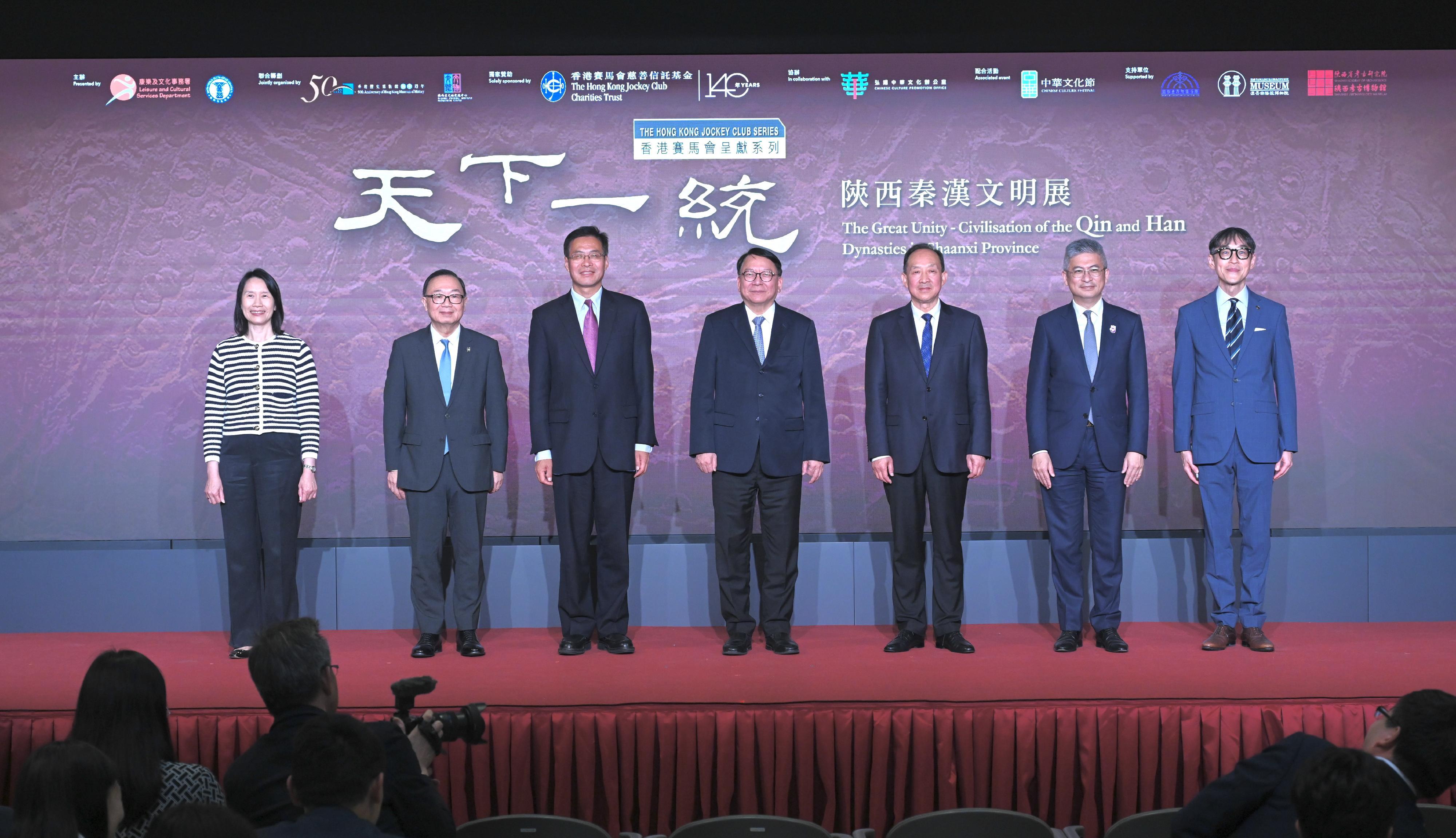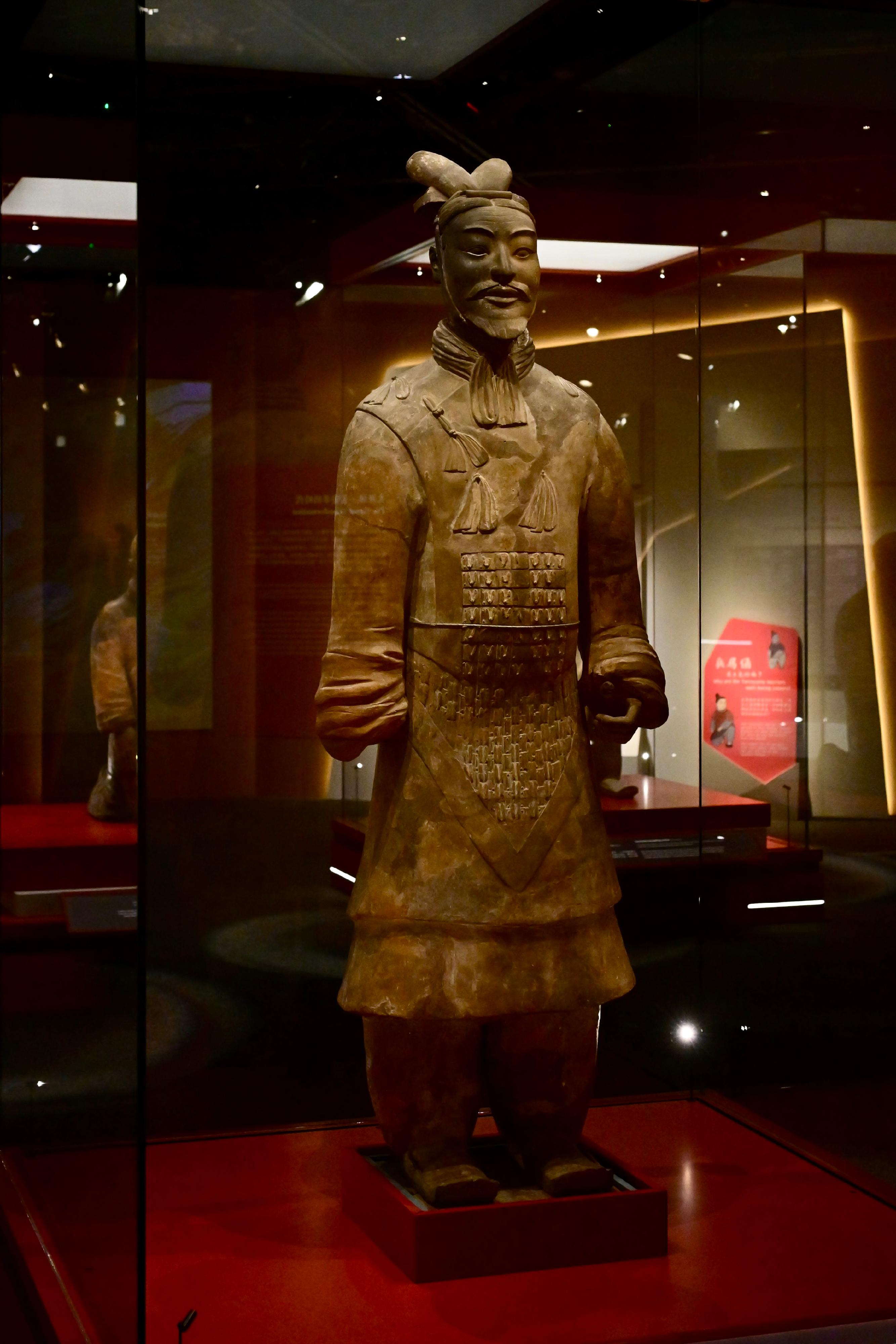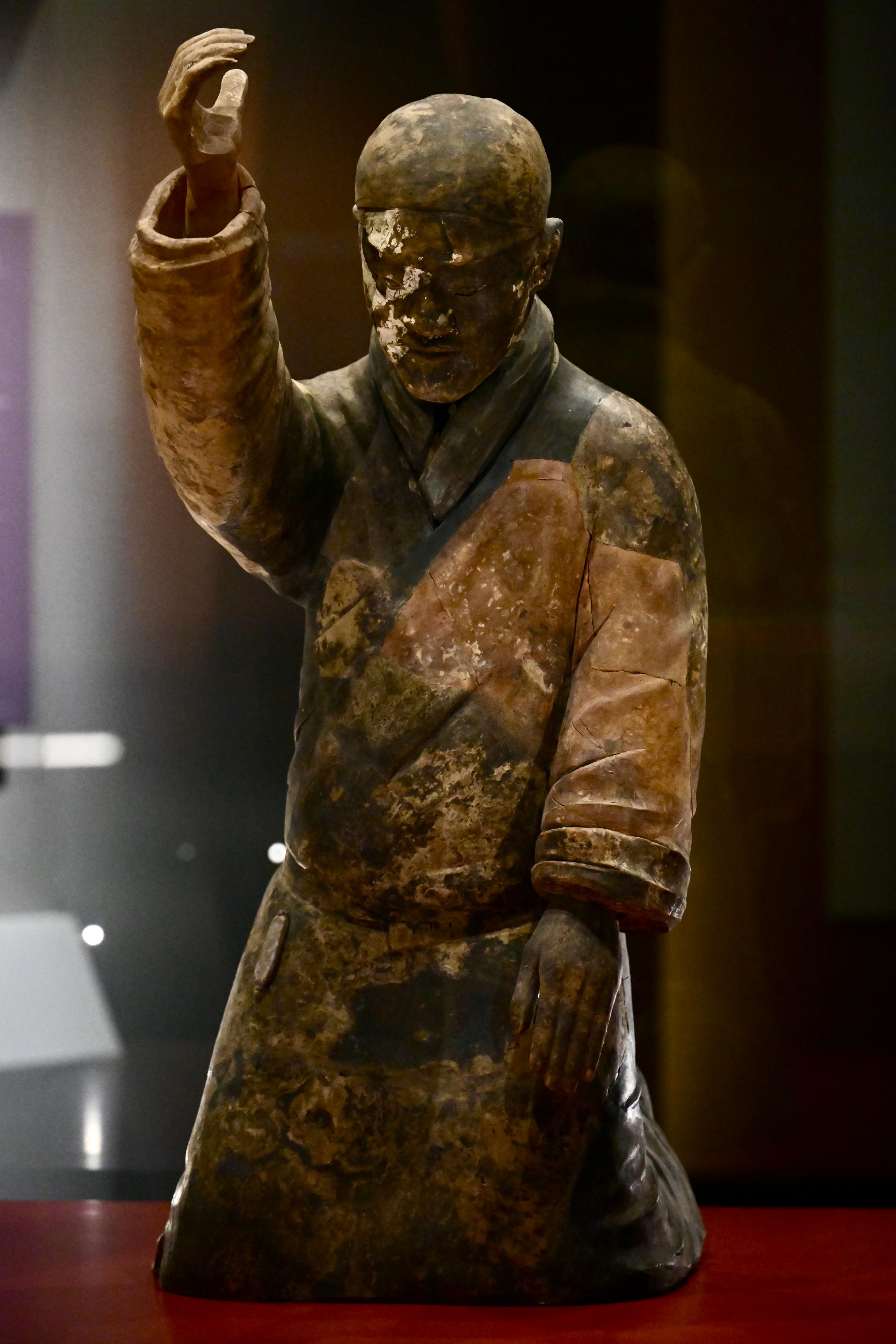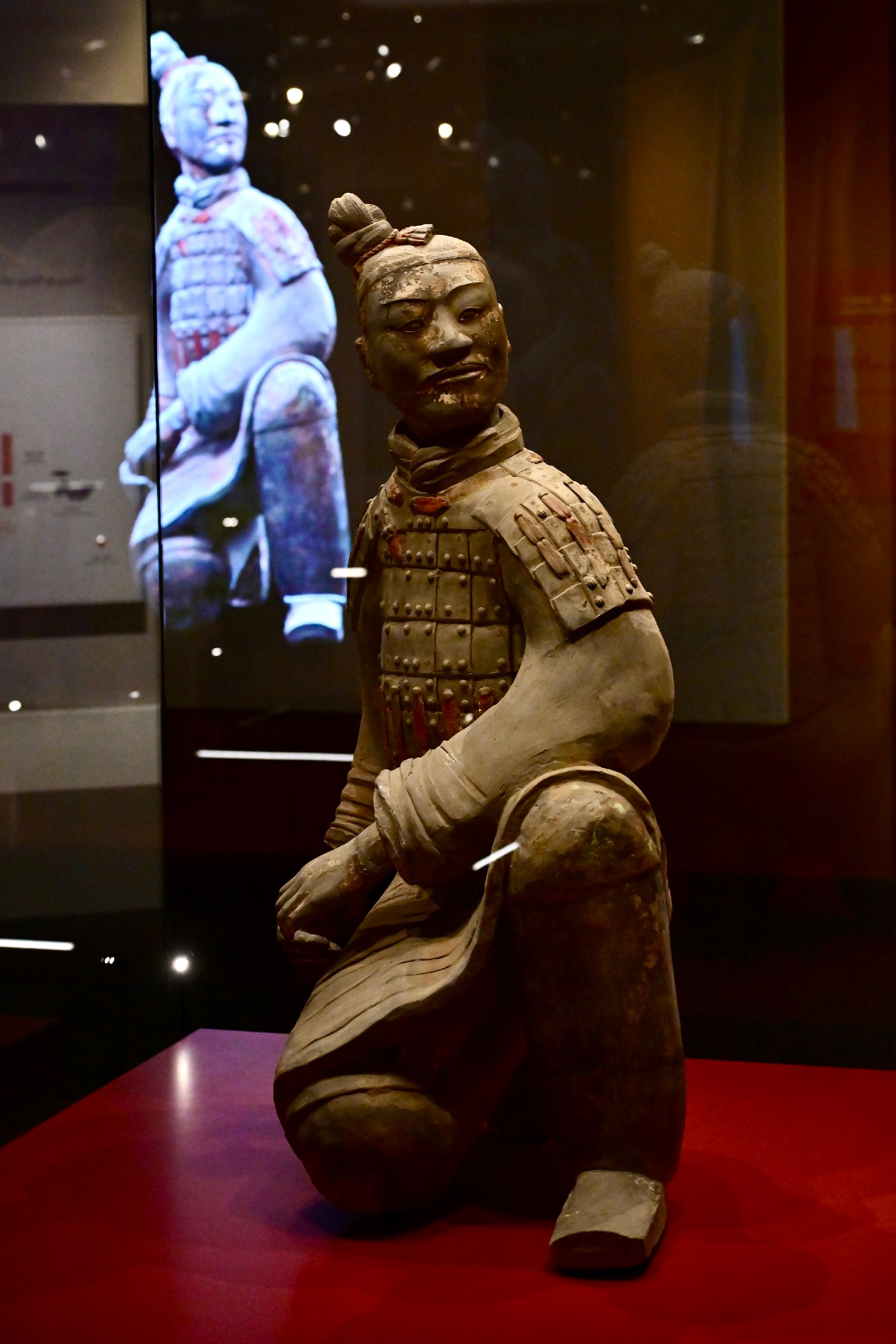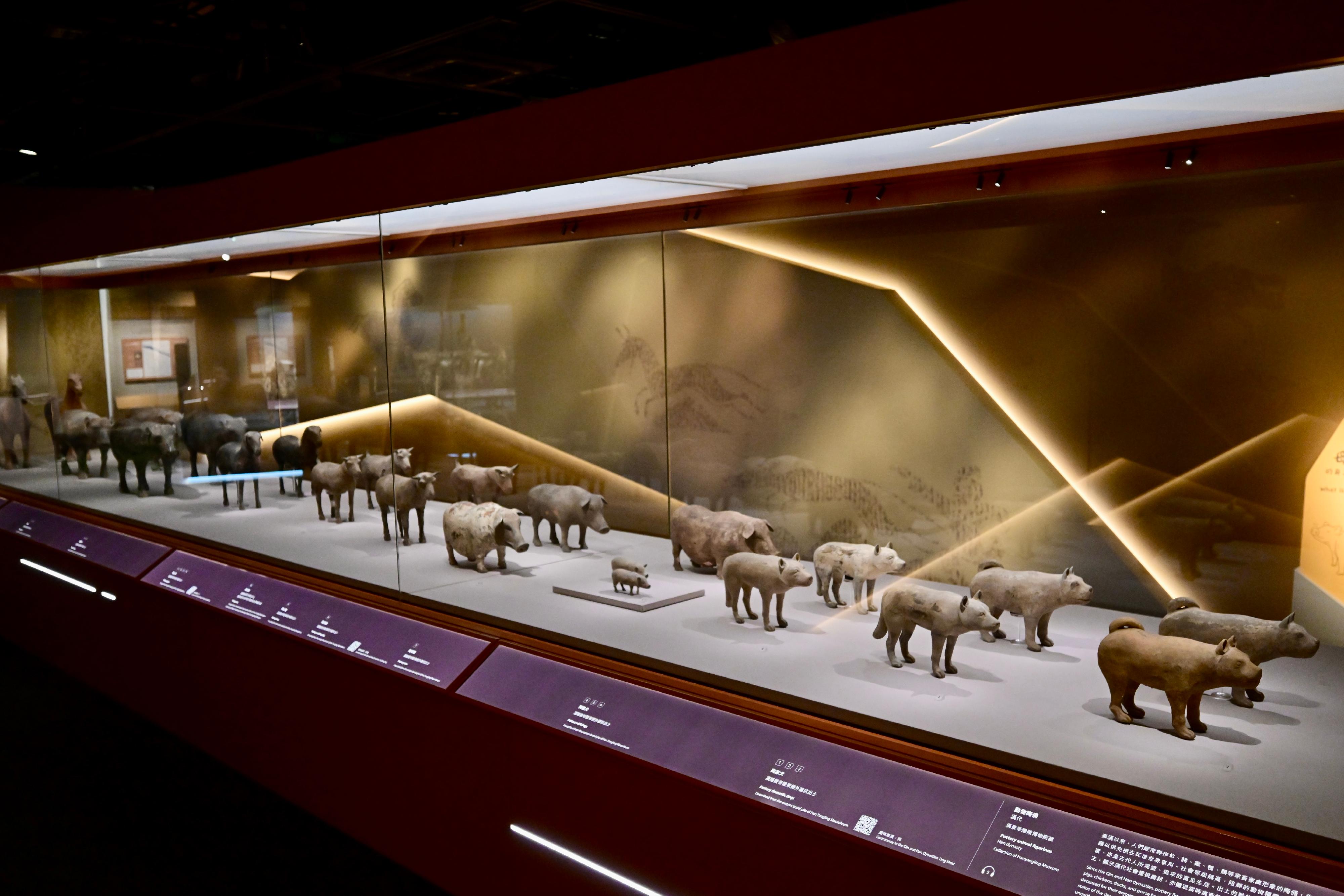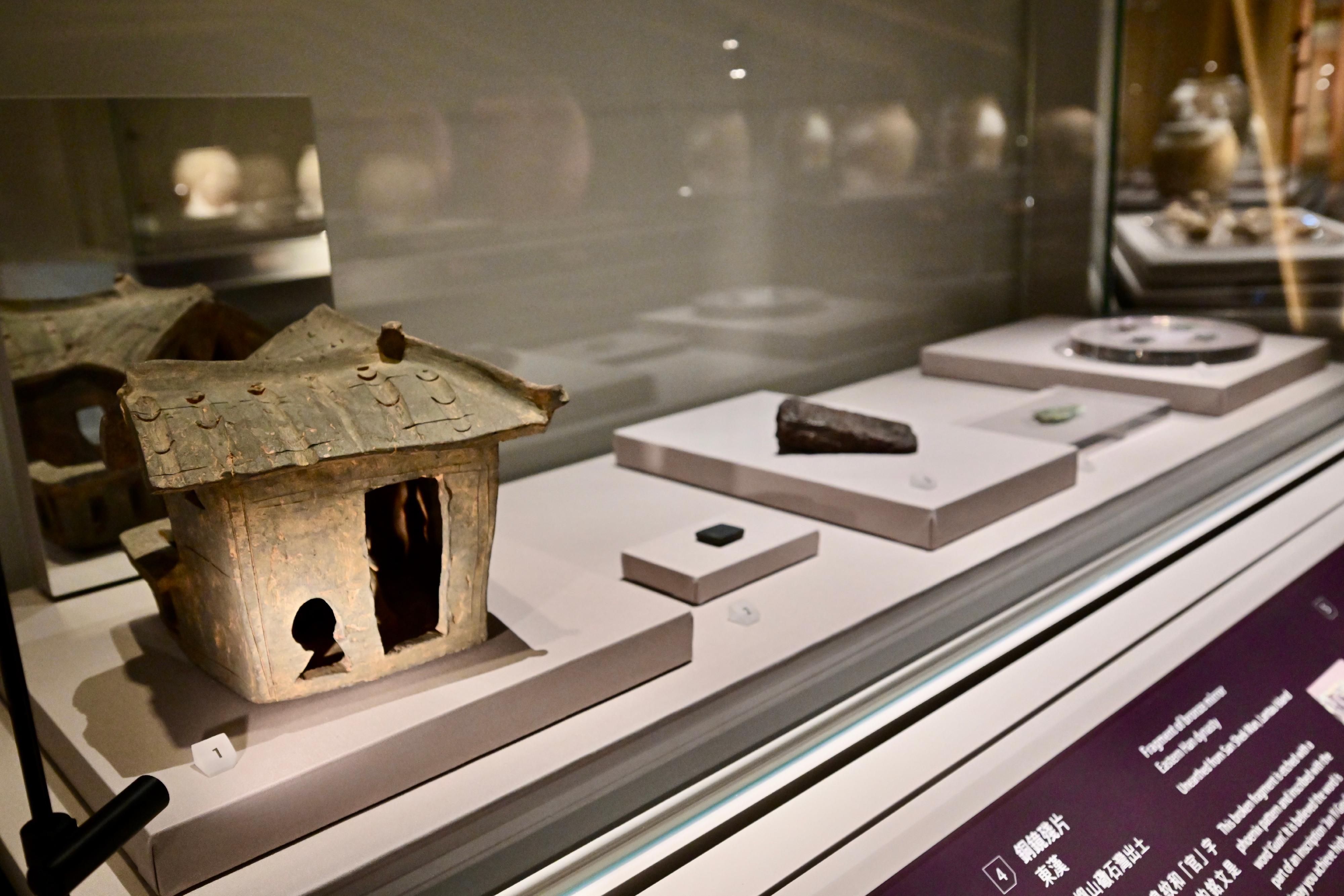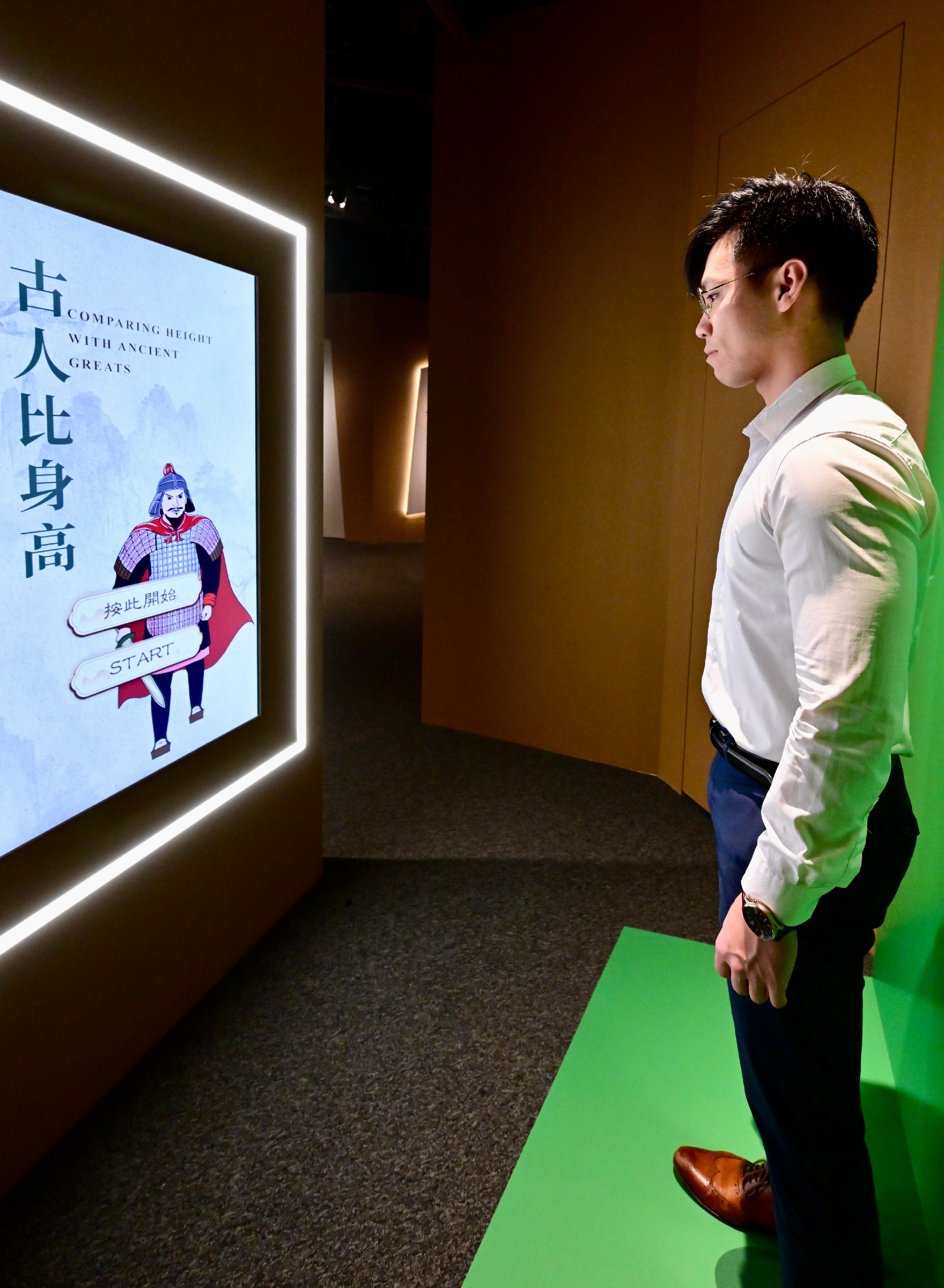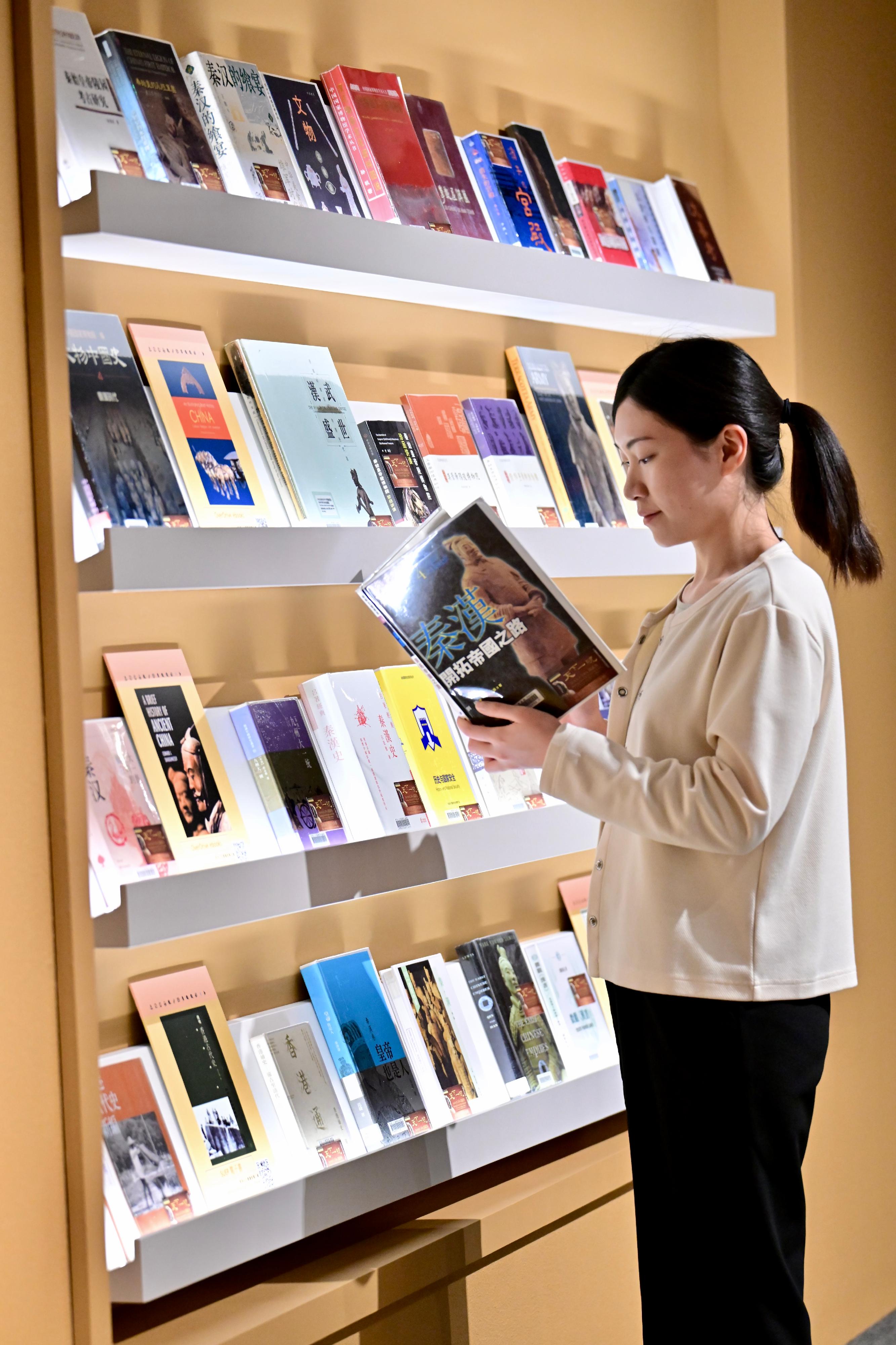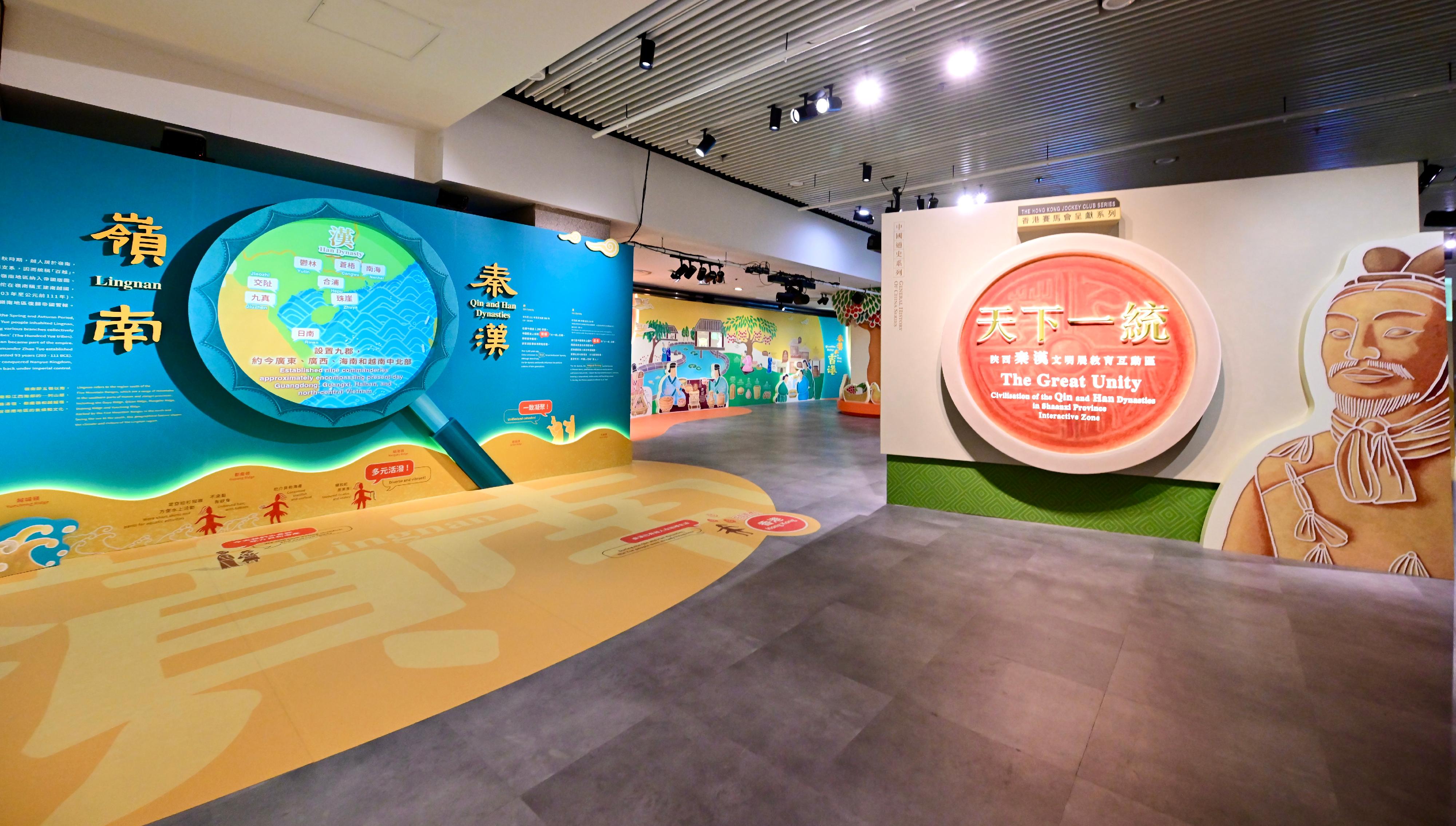HKMH to showcase over 130 sets of invaluable cultural relics including terracotta army of Emperor Qin Shihuang from Qin and Han dynasties (with photos)
******************************************************************************************
Addressing the ceremony today (April 15), the Chief Secretary for Administration, Mr Chan Kwok-ki, said that the Hong Kong Special Administrative Region Government established the Chinese Culture Promotion Office (CCPO) last year. The CCPO is dedicated to promoting Chinese culture and history-related activities, exchanges and collaborations, with the aim of promoting Chinese culture and enhancing the public's cultural confidence and national identity. In collaboration with the HKMH, the CCPO launched the first flagship project, the General History of China Series, allowing the public to gain a more comprehensive understanding of the development of Chinese civilisation. The first exhibition of the series, "The Hong Kong Jockey Club Series: The Ancient Civilisation of the Xia, Shang and Zhou Dynasties in Henan Province" launched last year, and the inaugural Chinese Culture Festival, have attracted a total of more than 1 million attendance, including 10 000 teachers and students. Nearly 20 per cent of the visitors were tourists. The Government hopes to showcase the unique charm of Chinese culture to the world through the precious historical and cultural treasures of the motherland, pursuing the mission of "telling good China's stories".
Mr Chan added that the exhibition launched today is the second major exhibition of the General History of China Series. The Qin and Han dynasties were of great significance and marked the first unified China in history, profoundly influencing the course of the historical development of China for over 2 000 years.
Other officiating guests at the opening ceremony included Deputy Director of the Liaison Office of the Central People's Government in the Hong Kong Special Administrative Region Mr Qi Bin; Deputy Director of the Shaanxi Provincial Cultural Heritage Administration Mr Qian Jikui; the Deputy Chairman of the Hong Kong Jockey Club, Mr Martin Liao; the Under Secretary for Culture, Sports and Tourism, Mr Raistlin Lau; the Chairman of Museum Advisory Committee, Professor Douglas So; and the Director of Leisure and Cultural Services, Ms Manda Chan.
Over 100 sets of carefully selected exhibits will be presented in this exhibition, originating from the Emperor Qinshihuang's Mausoleum Site Museum, the Hanyangling Museum, and the Shaanxi Academy of Archaeology (Shaanxi Archaeology Museum). More than half of these exhibits will be displayed in Hong Kong for the first time. Among the exhibits, 11 pieces/sets are grade-one national treasures with four of them to be exhibited outside the Mainland for the first time.
Highlight exhibits include three terracottas from the Qin dynasty which are grade-one national treasures, and are on display in Hong Kong for the first time, including the Terracotta General, the highest-ranking warrior yet uncovered at the Terracotta Army Pits; the Terracotta Kneeling Musician believed to be striking a musical instrument; and the Terracotta Kneeling Archer, on which traces of red pigment from over 2 000 years ago can still be seen on the armour. The terracottas are displayed independently in glass showcases transparent on the four sides, allowing visitors to appreciate from all angles.
Another highlight exhibit is Bronze chariot No. 1 (replica), the original set of which was unearthed from the Bronze Chariots and Horses Pit, Mausoleum of Emperor Qin Shihuang, Xi'an City, Shaanxi Province. It authentically replicates the form and structure of ancient chariot.
The exhibition also showcases a series of pottery animal figurines from the Han dynasty, unearthed from the Han Yangling Mausoleum, Shaanxi Province, which reflect the prosperity of animal husbandry at the time. Among them, the pottery goat, wild dog and domestic dog are exhibited outside the Mainland for the first time.
Other highlight exhibits include a bronze wild goose from the Qin dynasty, a pottery cast mould, a gold disc, naked warrior figurines in walking poses, painted cavalry figurines and tile end engraved with "Qian Qiu Wan Sui" from the Han dynasty.
The exhibition will also portray Hong Kong's development during the Qin and Han periods, featuring over 20 sets of archeological finds from Hong Kong, including "Wuzhu" bronze coins from the Han dynasty unearthed in So Kwun Wat in Tuen Mun, Sham Wan at Lamma Island, and Sham Wan Tsuen in Chek Lap Kok, as well as a pottery model of a house excavated from the Lei Cheng Uk Han Tomb.
Besides featuring valuable cultural relics, the exhibition is also complemented by multimedia programmes to allow visitors to uncover the terracotta army's tailoring secrets and learn the Chinese characters and measurements in standardised units from the Qin and Han periods. The reading corner in the exhibition gallery displays a number of collections specially selected by the Hong Kong Public Libraries, covering topics of history of the Qin and Han dynasties and archaeology of Hong Kong. Through these collections, members of the public can learn about the long history, origins and development of China and explore the ancient Chinese civilisation. The interactive zone located in the main lobby on the first floor presents the development of the Lingnan region during the Qin and Han dynasties through displays, animations and interactive games.
To tie in with the exhibition, the HKMH will organise a series of fascinating education and extension programmes, including four free public lectures by experts from Shaanxi and scholars from Hong Kong, free workshops for making items such as mini pottery terracotta warriors and clay mirrors. Teaching kits will be distributed to primary and secondary schools in Hong Kong, while outreach programmes and book displays will be arranged at the Hong Kong Public Libraries.
The exhibition is jointly presented by the LCSD and the Shaanxi Provincial Cultural Heritage Administration, jointly organised by the HKMH and the Shaanxi Cultural Heritage Promotion Center, solely sponsored by the Hong Kong Jockey Club Charities Trust, in collaboration with the CCPO. Full support is provided by the Emperor Qinshihuang's Mausoleum Site Museum, the Hanyangling Museum, and the Shaanxi Academy of Archaeology (Shaanxi Archaeology Museum). For details of the exhibition and activities, please visit the website at hk.history.museum/en/web/mh/exhibition/The-Great-Unity.html.
Ends/Tuesday, April 15, 2025
Issued at HKT 22:50
Issued at HKT 22:50
NNNN





